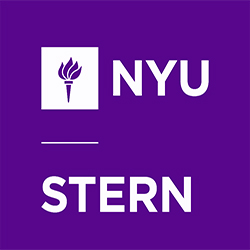The moment we’ve all been waiting for is finally here… we kicked off our NYC Immersion summer project with Citi Ventures. Over the next few weeks, our cohort will be split out into small groups to brainstorm solutions to some of the city’s biggest problems. While we won’t be able to implement our solutions as part of our coursework in the next few weeks, the goal is to use design thinking methods to identify relevant problems and start quantifying them. Once we have identified a problem we would like to pursue, we will explore tackling it from a holistic, tech perspective and distill the business risks and opportunities into a presentation.
We met with thought leaders in the “smart city” space to help us identify unforeseen challenges in our ideas and to talk through current efforts underway that may help or hinder our work. New York, like any major metropolitan area, is full of opportunities for improvement. Cities are controlled by local governments and are often slower to implement major technology improvements primarily due to their heavy focus on tight budgets. My group was directed to focus on the government as our primary “customer.” That being the case, we’re exploring the ways in which we can create sustainable solutions that last for many years and are easy to sell to stakeholders with clear, quantifiable results.
The idea of a “smart city” sounds new and trendy, especially with projects in the works like Google’s Sidewalk Labs, however, cities have been undergoing massive technological improvements for generations. Nevertheless, this is the first time in modern history we’ve been able to combine the efforts of urban innovation with the internet. We are at a turning point in time when we can collect vast amounts of data, even if we don’t know what we’re going to do with it quite yet. This data includes metrics on the basics such as temperature, humidity, and air pollution, but also expands to micro levels including street-level noise and light pollution, traffic flows, and consumer behavior. Collecting this type of data today will allow data scientists in the short-term future to analyze this data to predict future trends, along with what kind of impact we can have on it. Successfully predicting the human impact on city-wide efforts allows us to focus our efforts on the most pressing tasks at hand.
As part of our NYC Immersion summer project, we are exploring some of the ways in which major cities are starting this process and how it will shape the future of business. While the primary consumers and collectors of this data are inherently municipal and public governments, the private sector is beginning to fund projects in the effort to solve societal problems with innovative, tech solutions while building positive brand associations. We are trusting companies to use this data to help solve everyday problems that ultimately benefit society and it will be fascinating to see how this plays out as new solutions are built.
My group is excited to kick off this phase of the summer project and we will be finalizing a version-controlled project charter this week. We have approximately 5 weeks left in the summer semester to complete this project and are looking forward to presenting our proposal to professors, business leaders, and team members at Citi Ventures.
